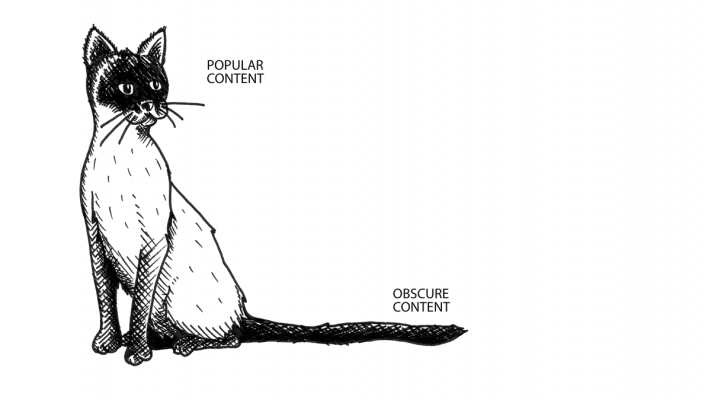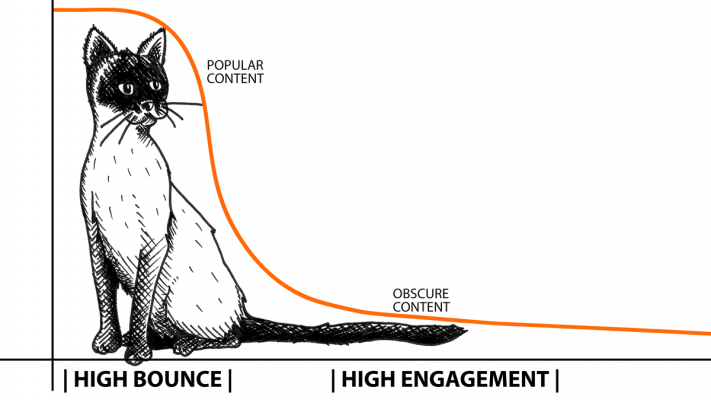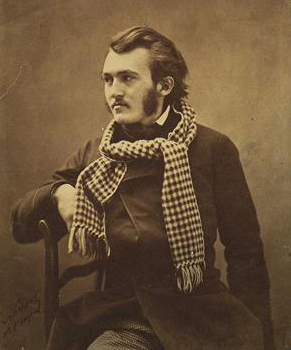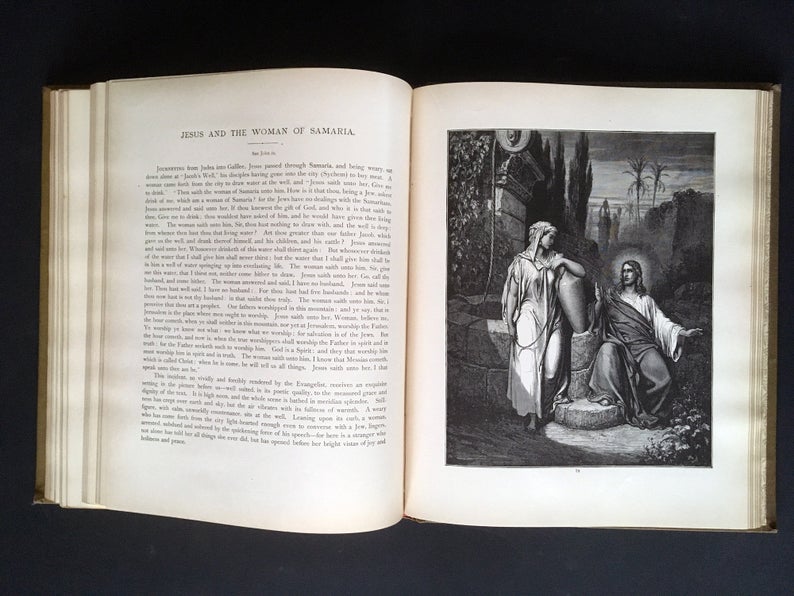This is a cat. It is also a metaphor.
It represents all of the content your museum puts on the Internet.
The cat’s head represents the most popular pages on your museum’s website.
The cat’s tail represents the more obscure pages that only get a few visits a month.

We chose a cat for this metaphor for two reasons.
First, the obvious. If you were to plot your web pages on a curve and sort them by traffic, the shape would look roughly catlike.
But here’s the other reason: Think of the last time you pet a cat. Did you pet its head or its tail?
If this were a real cat, you would probably give its head more attention. If you pet its tail, you might get scratched.
But metaphors can’t scratch. So we encourage you to take better care of this cat’s tail.
In concrete terms, we are saying that those lesser-visited pages are crucial to your museum’s content strategy. According to Chris Anderson’s Long Tail theory, published in Wired magazine in 2004, the web helps even the most obscure content find its audience.
And the people who have a deep interest in your most obscure topics, artists, and objects, are likely to be more engaged with your museum’s mission.
All of those pages at the head? The homepage, the visitor information? Those people probably want to do one thing: Get the information they are looking for and bounce.

The people who dare to spend time with the long tail? Those curious people want to learn more. As Anderson wrote, “Everyone’s taste departs from the mainstream somewhere, and the more we explore alternatives, the more we’re drawn to them.” Thanks to the digitization of museum collections, even the most non-mainstream objects can find their audiences, too.
And a curious thing happens when you make an effort to add more and more content to your museum’s long tail. The tail grows longer and longer, and over time, when you tally the views from the multitude of niche pages, the total will dwarf the traffic of the few pages at the head.
So be kind to your metaphorical feline and give its tail more attention. Curiosity doesn’t kill this cat. It makes its tail worth growing.










